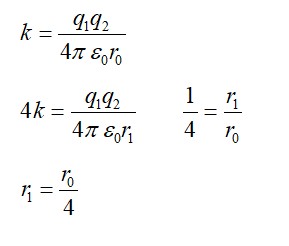Sometimes a radioactive nucleus decays into a nucleus which itself is radioactive. An example is
38sulphur
38Cl
38Ar(stable)
Assume that we start 1000 38S nuclei at time t=0. The number of 38Cl is of count zero at t=0 and will be again zero at t=
at what value of t, would the number of counts be a a maximum?
Sometimes a radioactive nucleus decays into a nucleus which itself is radioactive. An example is
38sulphur 38Cl 38Ar(stable)
Assume that we start 1000 38S nuclei at time t=0. The number of 38Cl is of count zero at t=0 and will be again zero at t= at what value of t, would the number of counts be a a maximum?
-
1 Answer
-
This is a Long Answer Type Questions as classified in NCERT Exemplar
Explanation- let 38S have N1 active nuclei and 38Cl have N2 active nuclei
+
N1=N0
+
Multiplying by and then integrating both sides we got
N2=
After solving it we get time t= (log )/
t= =
Similar Questions for you
Q = [4 *4.0026 – 15.9994] *931.5 MeV
Q = 10.2 MeV
Taking an Exam? Selecting a College?
Get authentic answers from experts, students and alumni that you won't find anywhere else
Sign Up on ShikshaOn Shiksha, get access to
- 66k Colleges
- 1.2k Exams
- 680k Reviews
- 1800k Answers


